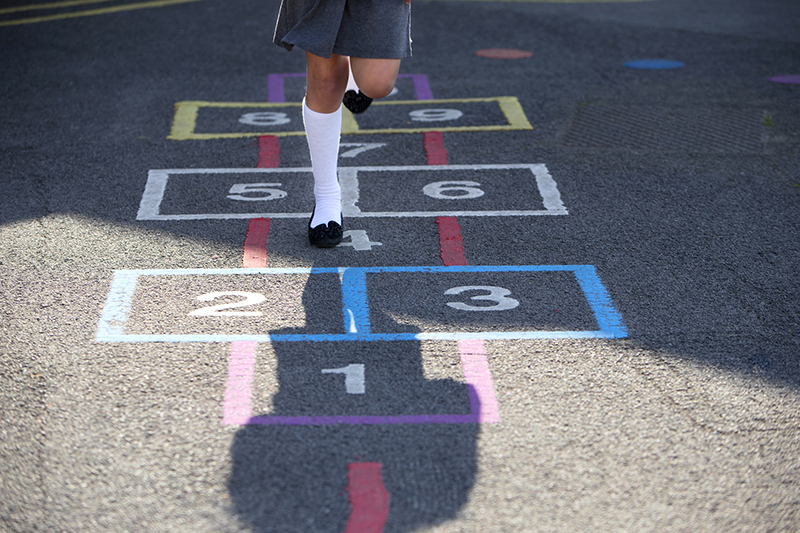Families For Life | Ten Ways to Make Your Own Obstacle Course

Obstacle courses are sheer fun for young children. They are a great way to spend energy and they help develop important motor movement skills.
"Many locomotor skills are used on a daily basis, such as leaping over a drain or running to catch a butterfly. In order to master these different locomotor skills, a child requires instructions at an early age as well as ample opportunities to practice them," says Mrs. Elsie Tan-Chua, Principal of Living Sanctuary Kindergarten.
The following are ten ideas using simple household items for both indoor and outdoor obstacle courses.
The step-over
This obstacle course comprises boxes, paper bags, and water bottles to train the child to navigate environments with objects of different heights and sizes. The aim is to train balance as overcoming each obstacle does involve relevant motor skills. Engaging all the child’s faculties here makes it an all-rounded exercise.
Jumping chasms
This obstacle course comprises cushions, pillows and bolsters arrange in increasing order of width to create ‘gaps’ for jumping across. The aim is to improve lower body strength and jumping across distances does this.
Zigzag moments
This obstacle course use plastic bottles of different shapes and colours to create a zigzag path for the child to walk or run through. Make the obstacle more challenging by ruling that a toy wagon loaded with blocks must be successfully brought through the path without a single block dropping. The zigzag trains the child’s motor reflexes for quickly changing directions. Gather your child’s friends and make this a competition.
Balloon table
This obstacle course is great for indoor fun on wet, rainy days. Get your child to blow balloons and fix them to the underside of a table. Wrap towels round the table legs to make accidental bumps into them are less painful. Now with this ‘tunnel’ of balloons, the game is to get through it on only hands and knees. Crawling allows children to practise coordination of the limbs and helps them see the world differently from walking.
Hopscotch
This is an oldie but goodie. Using sidewalk chalk, draw a hopscotch grid along your flat corridor or home driveway. Each player throws a small stone on the first square, then hops the squares in order, before turning and hopping back. If the player completes the course without mistakes, then he can progress to throwing his stone onto the next square in the sequence. If a player falls or misses his throw, his turn ends and the next player gets to try.
Paper walk
All you need for this are three sheets of A4 paper (or any kind of paper). Imagine that the floor is actually a big river. Your child needs to use the paper as stepping stones to get from one spot in the house to another (e.g. from the bedroom to the living room). This is a great course for challenging your child's problem solving skills, while simultaneously honing his coordination and strength.
All tangled up
This works best in a void deck with lots of pillars, or in a garden with many trees. Use brightly coloured string or raffia to create plenty of obstacles for your child to climb over, or crawl under. For an added challenge, tie small numbered/ alphabet tags to the strings, and get your child to collect the tags in order, or collect the correct letters to spell a word. Children who are kinaesthetic learners can pick up and better recall information through an activity like this.
Basket toss
Fill small Ziploc bags with dried rice or beans to create beanbags for a tossing game. Set up various laundry or household baskets to create an assortment of targets. Assign points for landing a shot in each basket, and let your child earn a treat for hitting a high score! This is a fantastic way to help a child develop good hand-eye coordination.
Newspaper croquet
Tightly roll up several sheets of newspaper to create a sturdy tube, and secure with masking tape - this is now your child's "croquet mallet". Mark "holes" in the ground with small pieces of paper or paper plates. Encourage your child to hit a ball into the hole. Or encourage your child to hit the ball at a certain tree/pillar. Set up a course of several targets, and reward your child for completing the round! This requires your child to practise eye-hand coordination in his attempt to take aim.
Recycled tunnel
The next time you have a delivery of a large household item, save the cardboard boxes to create a series of cardboard tunnels. Encourage your child to crawl through the tunnel - for a younger child you might want to start with a shorter tunnel as a longer one might be intimidating.
As you design the course, do not forget to keep in mind your child's own physical abilities. You want to make the course challenging but not impossible. Set up for success!
No matter which course you decide to try, do not forget to turn on the music, ensure that your child wear comfortable clothes, and most of all, have fun with him!
Explore more
- Let's all move it, move it
- Outdoor play
- Physical activity for younger children
- Play outside (0-6 years)
- What did Simon say?
Contributed by:
Early Childhood Development Agency